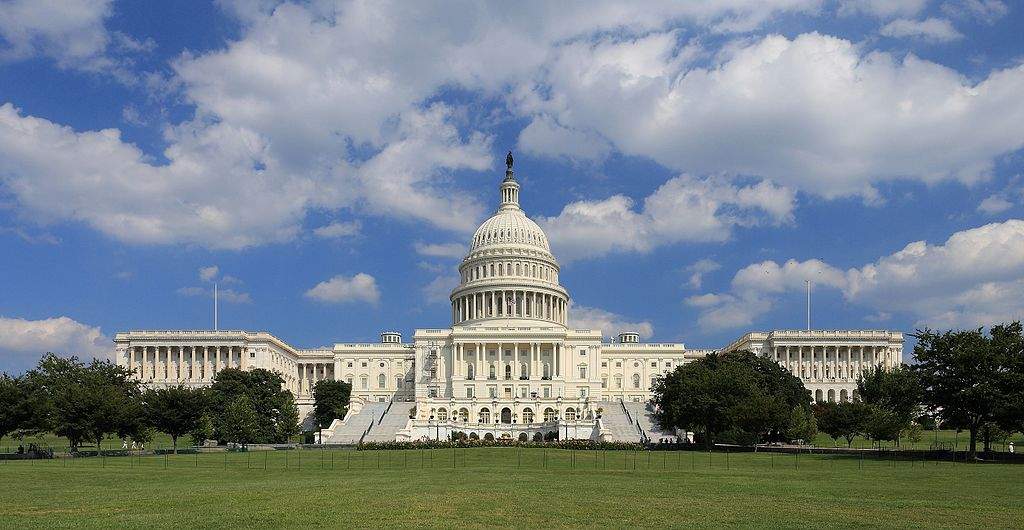U.S. President Donald Trump wants to declare war oncontemporary architecture as well: the U.S. press reveals that an executive order of the president (for now in draft status), titled Making Federal Buildings Beautiful Again (“Making Federal Buildings Beautiful Again”), is under consideration, which contains provisions on the style to be adopted for the construction of federal buildings. That is, they should be built in a style reminiscent of Greek and Roman architecture.
Currently, the construction of government buildings is guided by the “Guidelines for Federal Architecture,” written in 1962 by architect Daniel Patrick Moynihan (Tulsa, 1927 - Washington, D.C., 2003): the text, which is still valid today, states that federal architecture should be guided by two basic principles: “First, it must provide government agencies with efficient and economical facilities. Second, it must provide visual testimony to the dignity, resourcefulness, vigor, and stability of the American government.” In addition, Moynihan’s guidelines suggest three points to observe: “an architectural style that reflects the dignity, resourcefulness, vigor, and stability of the American government” with “emphasis on choosing the style that embodies the finest thoughts on contemporary American architecture”; “avoid the development of an official style” and “move the style forward from the architects to the government, not vice versa”; and “consider the selection and development of the site on which to build as the first step in the process.”
Several news outlets have published the text of Trump’s draft, the message of which goes in the diametrically opposite direction from that advocated by Moynihan, one of the most modern architects of his generation. The text of Trump’s executive order stems, according to the New York Times, from the work of the National Civic Art Society (NCAS), a nonprofit architecture group that believes contemporary architecture “has created degraded and dehumanizing environments.” “for too long,” NCAS President Marion Smith wrote in a message reported by the New York newspaper, “architectural elites and bureaucrats have mocked the idea of beauty, blatantly ignoring public opinion on style, and have quietly spent taxpayer money to build ugly, expensive, inefficient buildings. This executive order gives voice to the 99 percent: ordinary Americans who don’t like what our governments have built.”
The text of the draft (which can be read in full, for example, in the Chicago Sun-Times) states that “after 57 years, it is time to update the guidelines to make federal buildings beautiful again. Federal architecture should again inspire respect instead of confusion and revulsion. The style of new federal buildings should, like America’s beloved monuments, inspire the public through aesthetics, make Americans proud of our public buildings, and, where appropriate, respect a region’s architectural heritage. Classic and traditional architectural styles have proven their ability to inspire this respect. Their use should be encouraged.” The text also states that: “this preference does not exclude experimentation with new and alternative styles. However, care must be taken to ensure that alternative styles command respect from the public because of their beauty and their embodiment of American ideals.”
Further on, it states that “architectural styles, with special regard to the classical style, which enhance beauty, respect regional architectural heritage, and command public admiration, are the preferred styles for federal public buildings. In the nation’s capital region and for all federal courts, the classical style should be the preferred and default style, in case there are no force majeure causes that make it necessary to use other styles.” Same considerations for the renovation of existing buildings: “when renovating, reducing, or expanding federal buildings that were not built in a particular architectural style, the feasibility of renovation in a preferred architectural style should be considered.”
Trump’s decision has already raised widespread and widespread criticism. TheAmerican Institute of Architects (AIA), a kind of U.S. counterpart to our order of architects, has also moved against the decision to have federal buildings built in the neoclassical style. AIA President Jane Frederick and its CEO Robert Ivy wrote a letter to Trump opposing his wishes: “We express our strong and unequivocal opposition to the draft executive order to impose a federal architectural style. The order, as it now stands, would dictate a specific architectural style for the federal courts and other federal buildings.” The AIA, the missive reads, “is seriously concerned about the motivations behind this order”: “given the fact that a preferred architectural style could increase the cost of a project by up to three times the initial cost, we hope that the General Services Administration, Congress, and other agencies involved will take pause: since the additional costs would have to be borne by taxpayers, this is not an insignificant concern.” In addition, the AIA argues against choosing a default style because “there are many examples of beautiful and innovative buildings in all architectural styles, including those explicitly mentioned in the draft” (in fact, the text of the draft cites some styles, such as brutalism and deconstructivism, as negative examples), reasoning that the association “will not and never will give precedence to one style over another.” Communities, the text goes on to say, “should have the right and responsibility to choose for themselves which styles suit their needs.” Finally, the architects conclude, “the draft is antithetical to the purpose of giving the people a voice, and would set an extremely harmful precedent. [...] Our society should celebrate the differences that develop across time and place.”
Pictured: the Capitol building in Washington, DC. Ph. Credit Martin Falbisoner
 |
| Trump now declares war on contemporary architecture: wants to have federal buildings built in neoclassical style |
Warning: the translation into English of the original Italian article was created using automatic tools. We undertake to review all articles, but we do not guarantee the total absence of inaccuracies in the translation due to the program. You can find the original by clicking on the ITA button. If you find any mistake,please contact us.